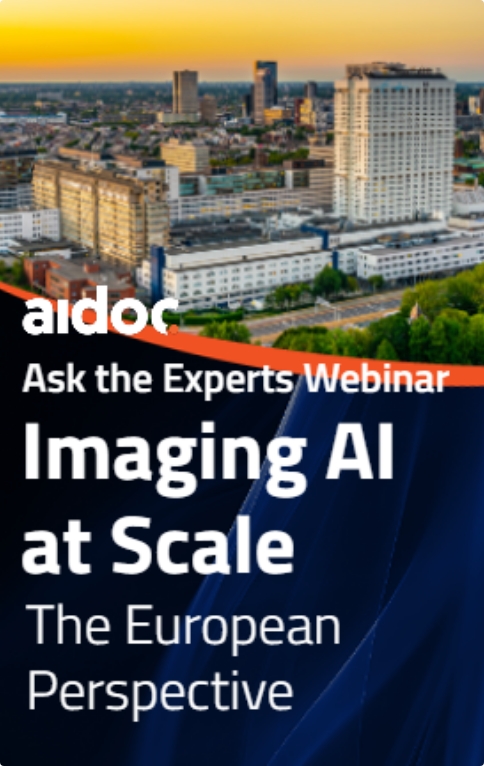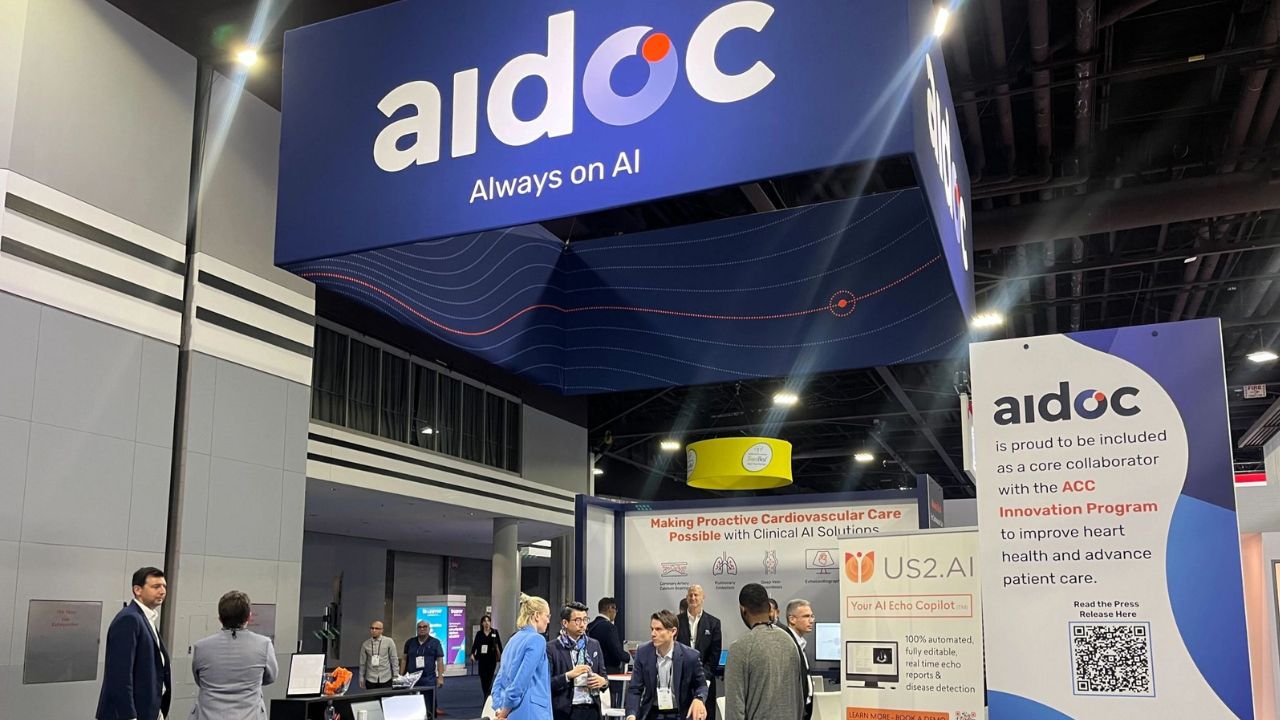Exploring artificial intelligence and innovation with the CMO and Co-Founder of Aidoc and Director of Endovascular Neurosurgery at Sheba Tel HaShomer City of Health, Gal Yaniv
There are multiple applications and opportunities within the realms of artificial intelligence (AI) and medicine, particularly today as technology continues to evolve at a remarkable pace and the capabilities of deep learning and algorithmic intelligence transform systems and solutions. Gal Yaniv, the CMO and co-founder of Aidoc and Director of Endovascular Neurosurgery at Sheba Tel HaShomer City of Health, discusses how AI plays a role in interventional neuroradiology, the potential of AI in the future, and what really stands out as innovation in the field.
Why are we seeing such extraordinary developments within the AI and interventional neuroradiology landscape?
Gal Yaniv (GY): There has been a boom in technology in the medical arena over the last decade due to a few factors, one of the most dominant being a higher demand for procedures such as stroke treatments. This is a true medical emergency – once an artery is occluded in the brain, which causes an ischemic stroke, every passing minute results in more and more neurons dying and poorer patient outcomes. As technology improves, we can better treat our patients, and we can treat more patients at speed. This, of course, means more opportunities for intervention, so the demand for better technology and support is increasing, as is the demand for improved stroke management treatment.
What role is AI playing in stroke management?
GY: At the moment, AI is primarily used in the management of stroke patients. For example, imagine if someone suffering from severe left-side weakness and the inability to talk is brought into the ER and clinically assessed with imaging. This is usually done using a CT and a treatment decision is then made to either treat conservatively with medication or with an endovascular procedure. If the latter is indicated, it will really depend which hospital a patient is in – a remote hospital would require that the patient be moved to another hospital as it may not have the right team on site. AI helps in the management of this process by helping to detect the stroke within a matter of minutes. For example, there are algorithms that can detect a large vascular occlusion (LVO) rapidly in the ER and can then send the images directly to the entire team on their mobile devices. This bypasses the limitations of a physician having to find a nearby computer and instead puts the information directly in their hands, allowing them to make rapid decisions that can potentially transform patient outcomes.
This capability is particularly powerful in the US hospital system that uses the model of one central hospital with all the capabilities that serves several smaller hospitals. If everyone shares the same alert system, then they can see the same data for the same patient and this can expedite treatment and outcomes.
How do you feel about AI in this space?
GY: At first, I was skeptical. It takes you seven years to learn medicine and another five to become a radiologist and now there’s an algorithm that can be as good as you are, or perhaps better at detecting time-sensitive pathologies? It’s an understandable skepticism, especially when the older technologies were not very good at detecting pathologies. However, as AI has undergone a bit of a revolution and deep learning has evolved significantly, this new technology is proving to be as good as a human benchmark. Radiologists can really benefit from recognizing this as the start of a new era, using AI as another eye that can look at the scans and ensure that they don’t miss anything life threatening or time sensitive. All radiologists are human, and can miss something sometimes. The algorithm watches our backs and makes sure we don’t miss the crucial things. Over the past few years, we have seen more people flip the switch to Aidoc and, amazingly, 96% of them, want to keep using it after they’ve finished their trial period. I think that’s a really solid endorsement. It’s a new era and I think the next few years are really promising.
GY: There is one very specific case, actually. A patient of around 40 years old came in because she was experiencing a severe headache. She came to the ER at around 1 am. After about three minutes, the radiologist on call got a notice from Aidoc. The system had flagged a tiny, tiny right frontal bleed, leading to further investigation, revealing a small aneurysm that had a tiny bleed and had sealed itself. This was life-threatening as it could have potentially fully erupted and harmed the patient. So, instead of her potentially waiting until the morning, she underwent a procedure to secure the bleed and it is very likely her life was saved.
What value does AI bring to stroke teams?
GY: The most important value-add is helping the patients. If you can expedite treatment, if you can resolve a stroke at speed, then they need less hospitalization and occupy less bed time, and need less physical support. It saves the practice costs as well, reducing time spent in the hospital and not needing expensive ICU beds or treatments. It also has the potential to streamline team coordination – with chat and collaboration functions that speed up communication.
How has this change in technology impacted on your career?
GY: I graduated from radiology in 2016 after serving as a military physician in Israel. I then went to the US for three years, did one year of fellowship at Yale in Connecticut, and then did two years at Mount Sinai in New York. Now I am chair of endovascular neurosurgery here in Israel at one of the best hospitals in the world. It’s a busy service that treats a lot of patients, and AI is really changing how we work and collaborate. This is an incredible career – we have a lot of technology at our fingertips and, because it’s one of the fast-growing areas of medicine, you can write the book as you go. We learn something new every day and this rapidly developing environment, both clinically and technologically, is very demanding. It’s very satisfying to help patients and to be able to access rapidly developing technology to help patients.
When Aidoc was founded in 2016, it was the breakthrough year for machine learning. It was a new era and we wanted to create a solution that valued accuracy and data and really stood out in the world of medicine. We knew that this solution had immense potential but that it had to be accurate, detail oriented and reliable because it could potentially help save lives. The future will very likely see AI enter the procedure room, helping physicians to better navigate in the arteries and determine the best equipment to use for different procedures. It will also allow us to cross borders – using the expertise of a surgeon in Israel to save a life in Africa. AI and robotics are poised to change the future.










